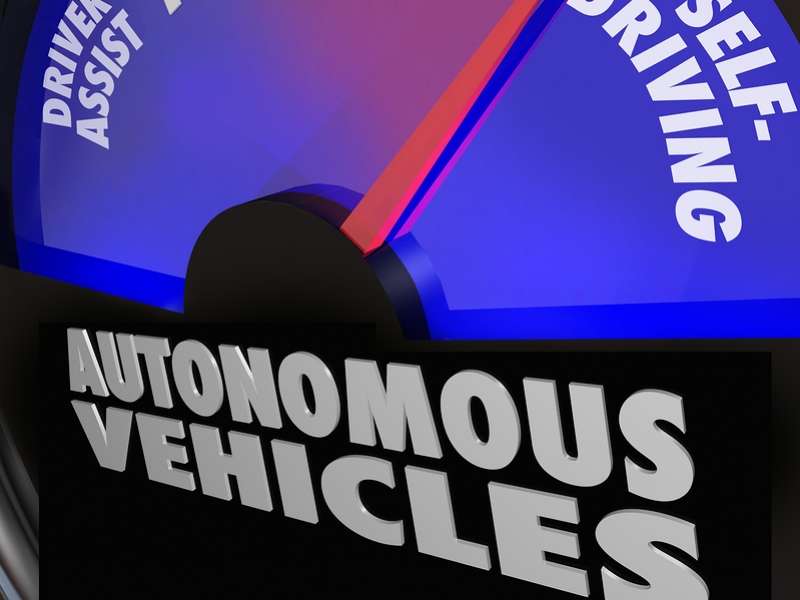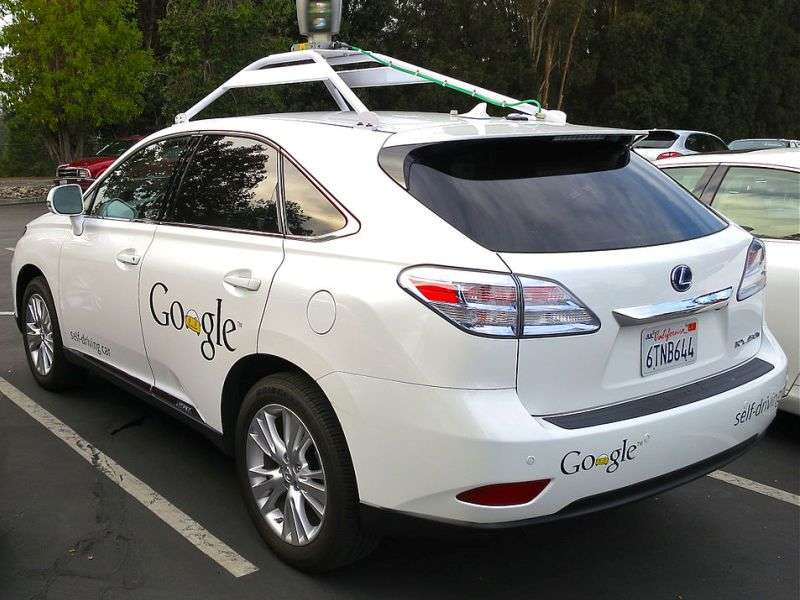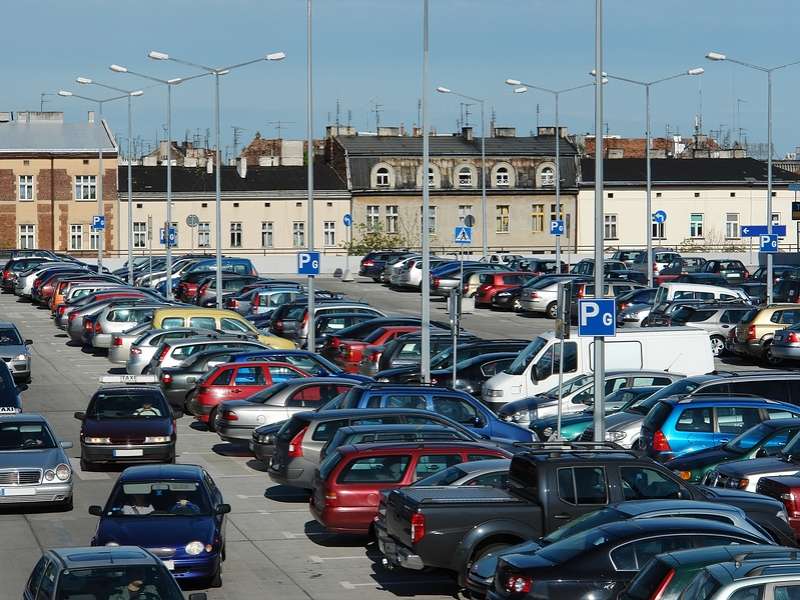Recent Articles
Popular Makes
Body Types
10 Benefits of Self-Driving Cars

Whether you’ll agree with this list of ten benefits of self-driving cars depends largely upon where you are in terms of your appreciation or disdain for automobiles.
If you’re in the camp of automotive enthusiasts who love to drive, and consider driving both a sport and an art form odds are you’re not looking forward to the day when self-driving cars are mandated. And yes, it does appear that day is on the horizon, as self-driving cars become more and more adept and the technology becomes more affordable to a broader range of automobiles.
If you’re among the people who consider cars merely appliances, nothing more than tools for getting from Atlantic avenue to Broadway, you’re probably looking forward to the day when cars become smart enough to go where you tell them to with minimal physical involvement on your part. Regardless of where you fall within the spectrum of drivers however, you will experience a number of benefits from self-driving cars—once there are enough of them on the roads to make a difference that is.
The non-profit Eno Center for Transportation—named for William Phelps Eno—the individual credited with developing the first traffic plans for New York, London, and Paris, as well as helping to invent stop signs, taxi stands, pedestrian safety islands, and other traffic features commonly used throughout the world, conducted a study regarding self-driving cars. The Eno Center’s study found it would take somewhere around ten percent of all cars on the road to be self-driving before benefits were experienced by all drivers whether they were in a self-driving car or not.
The benefits of self-driving cars will include…
Ten Benefits of Self-Driving Cars: Fewer Accidents
The leading cause of most automobile accidents today is driver error. Alcohol, drugs, speeding, aggressive driving, over-compensation, inexperience, slow reaction time, inattentiveness, and ignoring road conditions are all contributing factors. Given some 40 percent of accidents can be traced to the abuse of drugs and or alcohol, self-driving cars would practically eliminate those accidents altogether. The Eno study found if ten percent of all cars were self-driving, as many as 211,000 accidents would be prevented annually. Some 1,100 lives would be preserved, and the economic costs of automobile accidents would be reduced by more than $20 billion. If 90 percent of cars were self-driving, the numbers are even more sobering (sorry, couldn’t resist). The Eno Center’s study found up to 4.2 million accidents would be prevented; 21,700 lives would be preserved and more than $400 billion in related costs would be eliminated. This is all great news for pretty much everybody—except of course your local body shops, emergency services companies, and morticians. Those businesses would see a considerable drop-off in revenues.

Ten Benefits of Self-Driving Cars: Decreased (or Eliminated) Traffic Congestion
One of the leading causes of traffic jams is selfish behavior among drivers. It has been shown when drivers space out and allow each other to move freely between lanes on the highway, traffic continues to flow smoothly, regardless of the number of cars on the road. In fact, we have the capability of pretty much eliminating traffic jams right now. All we’d have to do is allow three to four car lengths of space between our car and the car in front of us, even in slow-moving traffic. The way we drive now, when traffic gets heavy, if someone needs to change lanes to exit the freeway, or if someone needs to enter the freeway, everybody has to stop to let it happen because we drive packed so tightly together. And, there’s no other way to say it, we do this out of selfishness. Every time we have ever proffered this theory to a group of drivers, their first response is if we drove that way, everybody would get in front of us. Which, of course is exactly the idea, if we allowed cars to get in front of us and freely change lanes, traffic would continue to flow. When you don’t allow cars to get in front of you traffic has to stop, your frustration level increases, and you become determined to let even fewer cars get in front of you—thus exacerbating the problem. Self-driving cars can be programmed to space out automatically, thereby eliminating the problem.

Ten Benefits of Self-Driving Cars: Increased Highway Capacity
When the idea of the highway was originally conceived, one of the foremost predicates of its functioning was traffic would always move. As soon as one car stops, every car behind it has to stop too. We discussed that somewhat in the previous entry regarding traffic congestion. However, there is another benefit to cars traveling down the highway and communicating with one another at regularly spaced intervals. More cars could be on the highway simultaneously because they would need to occupy less space on the highway. The results of a Columbia University study showed highway capacity, measured in vehicles per hour per lane, could be increased to nearly 12,000, given a scenario in which 100 percent of the cars on the highway were self-driving and communicating with one another at 75 mph. This compares to about 3,000 human-operated vehicles per hour per lane. This would happen because the safe vehicle distance could shrink to about 16 feet for self-driving cars going 75 mph, compared to the over 115 feet necessary for safe stopping by human-operated cars at the same speed.

Ten Benefits of Self-Driving Cars: Lower Fuel Consumption
With car-to-car communications systems enabled, self-driving cars would know what the cars in front of them were going to do before they did it. If one car needed to brake, all of the cars following it could do so simultaneously and in the process ease the ripple effect traveling through a line of cars. When the situation was cleared, all of the cars could then accelerate smoothly and gently back up to speed. It has been proven hard braking and so-called “jackrabbit starts waste fuel. Self-driving cars could be programmed to eliminate this style of driving altogether. Further, with all cars linked together traveling the same speed, there would be not speeding up and slowing down to accommodate drivers of different skill-levels and attention spans. It has been shown the more your car operates at a continuous engine speed, the less fuel it consumes. Additionally, with cars traveling together in packs, all at the same identical speed, drafting would come into play—improving aerodynamics considerably. This would result in a decrease in the amount of fuel required. One more thing, eliminating traffic congestion is also estimated to have the potential to save some 2.9 billion gallons of fuel annually.

Ten Benefits of Self-Driving Cars: Enhanced Human Productivity
Ever traveled anywhere by bus, train, or airplane? Freed from the task of managing the progress of the vehicle, all of the excess capacity afforded your eyes, hands, and brain can be turned to doing what you usually do on an airplane, train, or a bus. Finish up a project, type a letter, monitor the progress of your kid’s schoolwork, return phone calls, take phone calls safely, text until your heart’s content, read a book, or simply relax and enjoy the ride. Currently, the time spent in our cars is largely given over to simply getting the car and us from place to place. Interestingly though, even doing nothing at all would serve to increase human productivity. Studies have shown taking short breaks increase overall productivity. Thus, doing nothing on your way to work could actually make you more productive when you get there. Self-driving cars would make commute time productive time, for whatever pursuits we desire. Of course, while the people producing books on tape and podcasts might take something of a hit, the producers of video and filmed entertainment would experience a boom, as practically every car would be fitted with a video entertainment system.

Ten Benefits of Self-Driving Cars: Hunting For Parking Eliminated
OK, so you arrive at the shopping center in your car, what’s the first thing you have to do? Drive around and around the lot, looking for a parking space convenient to the entrance you prefer to use. Or, let’s say you’re going out for the evening, dressed to the nines in your spiffiest vines. You’re looking good, but you’re not really dressed to walk. After all, strappy little high heels and a ten-block walk to the venue are mutually exclusive entities. Yes, valet parking is an option, but who wants to be locked into entrusting their car to strangers? Self-driving cars can be programmed to let you off at the front door of your destination, park themselves, and come back to pick you up when you summon them. Suddenly you’re freed from the mundane task of looking for a parking space, because the car can do it all on its own. Further, it doesn’t really matter how far away that parking space is because you’re not going to be hoofing it to and fro anyway. What’s more, buildings could be designed to exist on less real estate because the need for an abundance of adjacent parking would be diminished. Your holiday shopping just got a whole lot easier.

Ten Benefits of Self-Driving Cars: Improved Mobility For Children, The Elderly, And The Disabled
If you’re blind, can’t walk, or you’re older and your reflexes and your memory have you concerned about driving, self-driving cars can ease the burden of transportation for you considerably. Suddenly blind people can get to work just as easily as sighted people, enabling them to be more productive in the work force. Children of aging parents are freed from the worry of taking off work to make sure parents get to doctor’s appointments, or to their weekly Mah Jong game, because the car can be programmed to do it on its own. Programming the car to pick up people, drive them to their destination and then park by themselves, will change the lives of the elderly and disabled by providing them with critical mobility. Further, parents won’t have to worry about getting their kids to school in the morning, picking them up in the afternoon, driving them to soccer practice, or to the movies on the weekend—the car will be capable of doing those things all on its own. And don’t worry, with parental safeguards in place, the car can be programmed to only go to specific destinations.

Ten Benefits of Self-Driving Cars: Elimination of Traffic Enforcement Personnel
If every car is “plugged” into the grid and driving itself, then speeding,—along with stop sign and red light running will be eliminated. The cop on the side of the road measuring the speed of traffic for enforcement purposes? Yeah, they’re gone. Cars won’t speed anymore, so why send a police officer out to write speeding tickets? Yes, there will probably still be accidents occasionally, but they’ll be fewer and farther between. This means you can have a minimal contingent of police officers assigned to traffic duties, freeing more of the force up to deal with crime.
Which also means…

Ten Benefits of Self-Driving Cars: Higher Speed Limits
Since all cars are in communication with one another, and they’re all programmed to maintain a specific interval between one another, and they all know when to expect each other to stop and start, the need to accommodate human reflexes on the highway will be eliminated. Thus, cars can maintain higher average speeds, while sacrificing very little in the way of safety and/or fuel efficiency. This means higher speed limits can be enacted, as the concerns about collisions will be all but eliminated.

Ten Benefits of Self-Driving Cars: Lighter, More Versatile Cars
The vast majority of the weight in today’s cars is there because of the need to incorporate safety equipment. Steel door beams, crumple zones and the need to build cars from steel in general relate to preparedness for accidents. Self-driving cars will crash less often, accidents will be all but eliminated, and so the need to build cars to withstand horrific crashes will be reduced. This means cars can be lighter, which will make them more fuel-efficient. Also, since you don’t have to be concerned about the placement of the control mechanisms for a car, you can arrange the interior any way you want. All the seats can even face inwards, as there’s no need to be concerned about a driver’s visibility.
